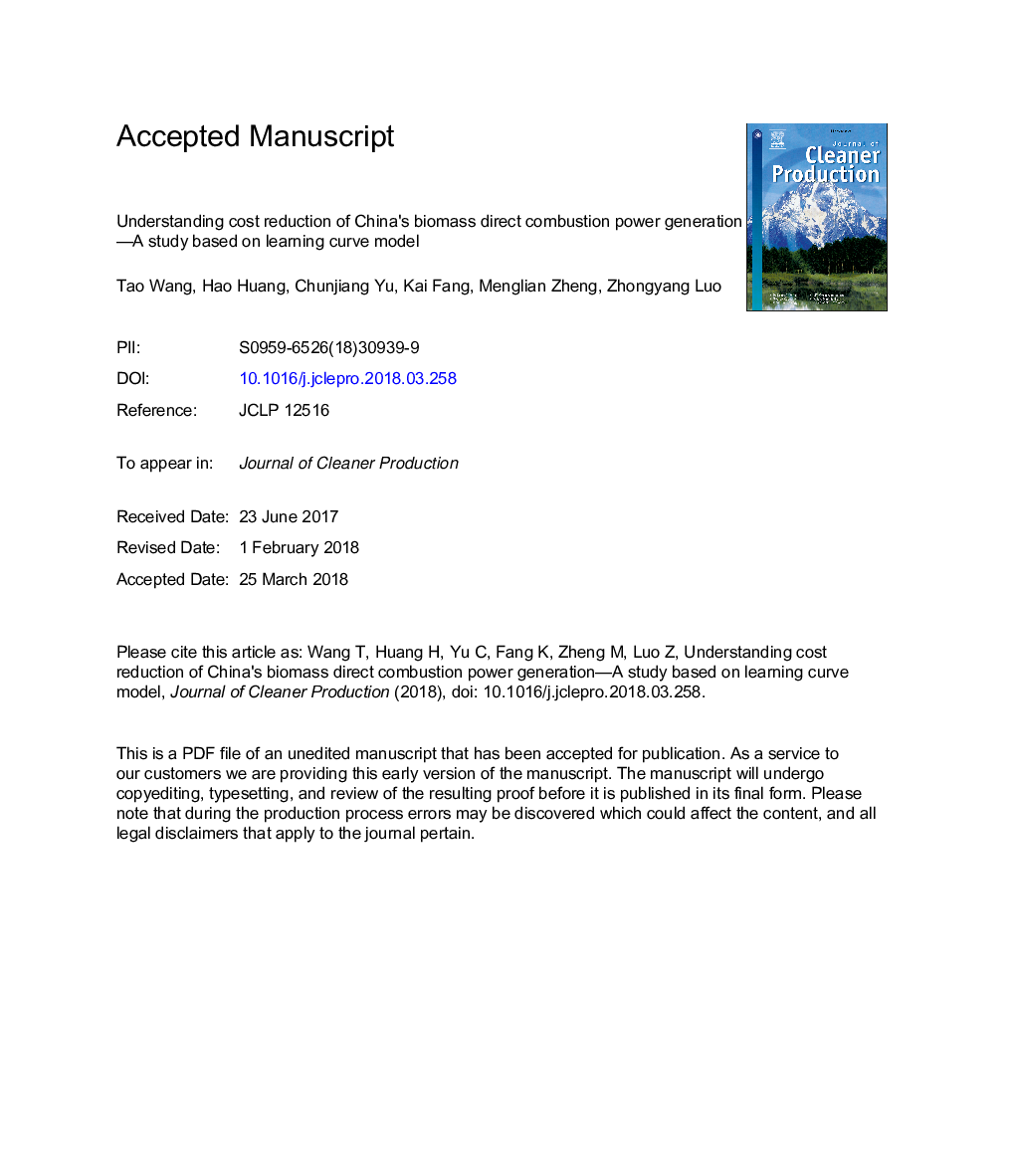| Article ID | Journal | Published Year | Pages | File Type |
|---|---|---|---|---|
| 8095559 | Journal of Cleaner Production | 2018 | 35 Pages |
Abstract
During the critical transition towards cleaner production (CP), the developing and transition countries should pay extra attention to displace traditional biomass utilization with CP concepts such as biomass direct combustion power (Bio-DCP). China has witnessed impressive growth in its Bio-DCP sector from 2006 to 2014. The further industrial expansion and policy making of Bio-DCP in China and other countries in transition call for a deeper understanding of cost reduction mechanisms. In this study, the learning curve models (i.e., electricity production cost as a function of multiple factors including cumulative installed capacity, operation & maintenance costs, feed-in-tariff, and cogeneration) were developed to (i) empirically estimate the learning rates of China's Bio-DCP, and (ii) investigate the impacts of past technological developments and policies on the cost development. Main findings include: (i) The overall learning rate of China's Bio-DCP is 4.54% over the period 2006-2014; (ii) The raised feed-in-tariff in 2010 shows a positive effect on the learning of Bio-DCP; (iii) The circulating fluidized bed projects show a higher learning rate compared to that of the grate boiler projects. Based on the above results, suggestions regarding the Bio-DCP's future development are offered, including discriminative subsidies, biomass waste supply chains, cogeneration, and multi-industry parks.
Related Topics
Physical Sciences and Engineering
Energy
Renewable Energy, Sustainability and the Environment
Authors
Tao Wang, Hao Huang, Chunjiang Yu, Kai Fang, Menglian Zheng, Zhongyang Luo,
